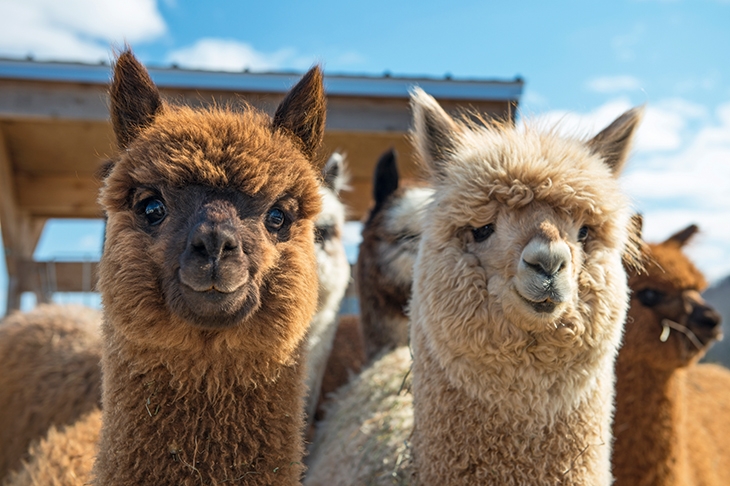Of all the window displays in Amsterdam this spring there was just one that stopped me in my tracks. I had come for tulips, canals, the tremendous Van Gogh and Japan exhibition, but the unexpected highlight of my trip was the sight of
a dozen alpacas beaming through the glass of a shop front off the Herengracht.
Nothing could have made me forget the rain like this jubilant herd. I have long had a passion for alpacas but had never seen faux ones quite so lifelike. These were made from real alpaca fur — brown, white, chocolatey caramel — and were proportionally perfect, as though a craftsman had scaled a real one down in size and taken into consideration just how absurdly high its coat to body ratio is. Needless to say I bought one at once.
Like Paddington Bear, alpacas have adapted remarkably well to life beyond Peru. Although they are a common enough sight in the countryside today, with around 50,000 grazing across the UK, it is only in the past few decades that they have flourished here in any number. Alpacas first arrived in Britain in the early 19th century as zoo and show animals before being bred for their fleeces. Prince Albert kept a pair at Windsor and is said to have had them shorn for robes for himself and Victoria.
Alpaca fibre has an intriguing sheen. If ever a character in a 19th- or early 20th-century novel wants to make a statement, you can bet he’ll purchase an alpaca-weave suit. F Scott Fitzgerald understood the significance and style of the fleece better than most. The moment Mr Moonlight Quill decides to transform his wrecked bookshop into a second-hand store in ‘O Russet Witch!’ he ‘let his goatee grow until it resembled the tail-feathers of an ancient sparrow and substituted for a once-dapper business suit a reverence-inspiring affair of shiny alpaca’.
Alpacas manage to inspire reverence while being incredibly friendly. They look so exotic next to the sheep they protect. They are smaller than llamas and generally around half their weight, but produce significantly more fleece. Their faces also look less angular which, with their wide, round eyes and abundance of fur, contrives to make them more approachable. Beware, though, they are fond of spitting. They are camelids after all.
Despite their salivating, alpacas are an increasingly popular fixture at weddings. Forget goat yoga or racing micro-pigs. Forget horse-drawn carriages. Alpaca and llama nuptials are now all the rage. Alpacas can serve as ring-bearers or simply mingle with guests. They double as an orchestra, too, humming one moment, calling like birds the next, squawking, grunting, grumbling.
They are sometimes tethered to greet the wedding party upon arrival. You can expect to be handed paper bags of feed rather than confetti. The bride who abhors the idea of being walked down the aisle can choose to walk an alpaca down the aisle instead.
You need a few acres in which to keep alpacas. For the moment I’m content with my Dutch specimen. Somehow larger than it looked in the shop, it refused to be contained in my hand luggage. Said my companion to the air hostess: ‘A gin for
her and milk for him.’






Comments